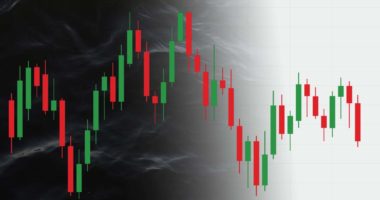If you are new to trading penny stocks, there are numerous trading terms one will come across as a trader. Some terms are the basics, which are the foundation for profitable trading. Others are more advanced which you may encounter with technical analysis. Today let’s start with a basic term like market capitalization and its stock categories.
Market capitalization, or “market cap” for short, defines the total worth of a company. It is calculated by multiplying the penny stock’s outstanding shares by the current share price. Believe it or not, a company’s stock price alone does not define the worth of a company.
Let’s give an example. A penny stock whose share price is $5 with 100 million shares outstanding has a market cap of $500 million. But a penny stock trading at $2.50 & 500 million shares outstanding will have a market cap of $1.25 billion.
Typically when trading you will notice that public companies are grouped into different categories by market cap. This ranges from micro-cap to large-cap. Although, not all traders agree on the exact cutoff criteria for each group.
Starting small: What Is A Micro Cap Stock?
Nano-cap stocks usually have a market cap that is less than $50 million. Meanwhile, micro-cap stocks are typically defined as having a market cap between $50 million to $300 million. This category is where one can find the bulk of penny stocks.
Some of the top penny stocksmay be an emerging tech company whose product is still in beta. Others could be clinical-stage biotechs evaluating a new drug candidate. While there’s usually an immense opportunity for growth in this group, keep in mind there is also high risk.
What Is A Small Cap Stock?
Next up are small-caps, which are typically defined as companies with a market cap under $2 billion and above $300 million. This category is like micro-caps. Small-caps are also typically newer companies that could come with large growth potential and are considered high risk. However, historically small-cap stocks have outperformed their larger counterparts as the economy has come out of recessions.
PennyStocks.com Extras: What About the “Other Caps”?
What Is A Mid Cap Stock?
Mid-caps are usually defined as companies with a market cap between $2 and $10 billion. This group could be a happy medium for a risk intolerant trader. It tends to be less volatile than its smaller counterparts and could offer a higher level of growth. This is compared to its larger counterparts.
What Is A Large Cap Stock?
Last but not least are large-caps stocks, which usually are defined as a market cap of $10 billion or more, and mega-caps whose market caps come in over $200 billion. This category is typically the least risky of all, although any type of trading comes with risk, as these companies are normally stable and leaders of their industry. Your trade style, time table, and risk tolerance are just some of the factors that can help you decide which type of stock you will favor most.









